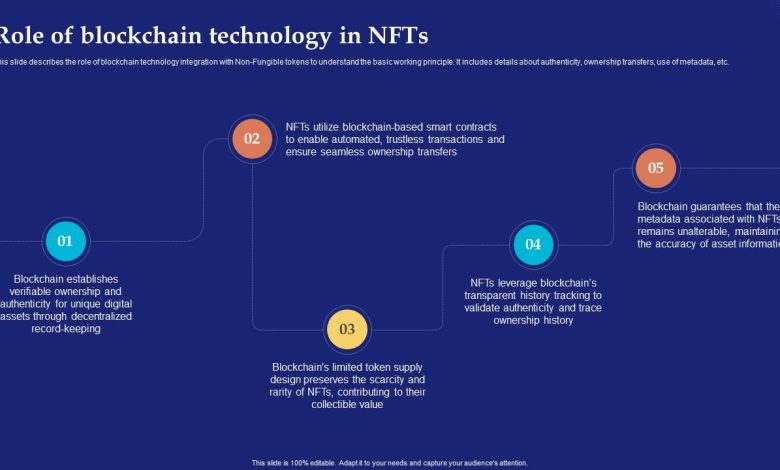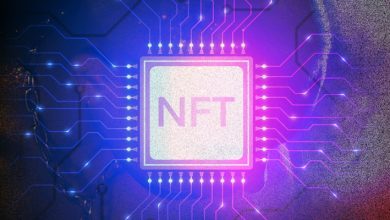Blockchain Technology Behind NFTs: Explained

- Understanding the Basics of Blockchain Technology
- The Rise of NFTs in the Digital Art World
- How Blockchain Ensures the Authenticity of NFTs
- Exploring the Role of Smart Contracts in NFT Transactions
- Challenges and Opportunities in the NFT Market
- The Future of NFTs and Blockchain Technology
Understanding the Basics of Blockchain Technology
Blockchain technology is the underlying technology behind NFTs, or non-fungible tokens. It is essential to understand the basics of blockchain technology to grasp how NFTs work and why they are gaining popularity in various industries.
Blockchain is a decentralized and distributed ledger technology that securely records transactions across a network of computers. Each transaction is stored in a block, which is then linked to the previous block, forming a chain of blocks – hence the name blockchain. This technology ensures transparency, security, and immutability of data.
One of the key features of blockchain technology is its ability to create digital assets like NFTs. NFTs are unique digital tokens that represent ownership of a specific asset, such as digital art, collectibles, or even real estate. Unlike cryptocurrencies like Bitcoin or Ethereum, which are fungible and can be exchanged on a one-to-one basis, NFTs are non-fungible and cannot be exchanged equivalently.
By leveraging blockchain technology, NFTs can be bought, sold, and traded securely without the need for intermediaries like banks or brokers. This peer-to-peer transaction system eliminates the risk of fraud and ensures that ownership rights are accurately recorded on the blockchain.
In conclusion, understanding the basics of blockchain technology is crucial for comprehending the mechanics behind NFTs. As blockchain continues to revolutionize various industries, NFTs are just one example of how this technology can be utilized to create unique and valuable digital assets.
The Rise of NFTs in the Digital Art World
The rise of NFTs in the digital art world has been nothing short of revolutionary. Non-fungible tokens, or NFTs, have completely transformed the way digital art is bought, sold, and collected. Artists are now able to tokenize their work, giving them a unique digital signature that proves ownership and authenticity. This has opened up a whole new world of possibilities for artists, allowing them to reach a global audience and monetize their creations in ways that were previously impossible.
NFTs are built on blockchain technology, which ensures that each token is one-of-a-kind and cannot be replicated or forged. This level of security and transparency has made NFTs incredibly popular among collectors, who are willing to pay top dollar for digital art that they can truly call their own. The decentralized nature of blockchain also means that there is no need for intermediaries, such as galleries or auction houses, which can take a significant cut of an artist’s earnings.
One of the key benefits of NFTs is that they allow artists to retain ownership of their work, even after it has been sold. This means that artists can continue to earn royalties every time their art is resold, providing them with a steady stream of income that can last a lifetime. This has the potential to completely disrupt the traditional art market, which has long been dominated by galleries and dealers who take a large percentage of an artist’s earnings.
Overall, the rise of NFTs in the digital art world represents a major shift in how art is created, bought, and sold. With blockchain technology behind them, NFTs offer artists a level of security, transparency, and control that was previously unimaginable. As more and more artists and collectors embrace this new technology, the future of digital art looks brighter than ever.
How Blockchain Ensures the Authenticity of NFTs
Blockchain technology plays a crucial role in ensuring the authenticity of NFTs. By leveraging the decentralized and immutable nature of blockchain, NFTs are uniquely identified and verified, making them secure and tamper-proof.
Each NFT is represented by a unique token that is stored on a blockchain network. This token contains metadata that includes information about the digital asset it represents, such as the creator, ownership history, and other relevant details.
When an NFT is created, a digital signature is generated and attached to it. This signature acts as a cryptographic proof of authenticity, ensuring that the NFT is genuine and has not been altered or duplicated.
Furthermore, the decentralized nature of blockchain ensures that NFTs cannot be controlled or manipulated by any single entity. This distributed ledger technology makes it nearly impossible for fraudulent activities to take place, providing a high level of security and trust for NFT transactions.
Exploring the Role of Smart Contracts in NFT Transactions
Smart contracts play a crucial role in facilitating transactions involving non-fungible tokens (NFTs). These self-executing contracts are stored on a blockchain and automatically execute the terms of an agreement when certain conditions are met. By utilizing smart contracts, NFT transactions can be securely conducted without the need for intermediaries, reducing the risk of fraud and ensuring transparency.
One of the key benefits of using smart contracts in NFT transactions is the ability to automate the process, eliminating the need for manual intervention. This not only streamlines the transaction process but also reduces the potential for errors. Additionally, smart contracts can help enforce the terms of the transaction, ensuring that both parties fulfill their obligations.
Furthermore, smart contracts can also provide a level of programmability to NFT transactions, allowing for more complex and customizable agreements. This can include royalties for creators, automatic resale mechanisms, and other innovative features that enhance the value of NFTs. Overall, smart contracts are essential in unlocking the full potential of NFTs and revolutionizing the way digital assets are bought, sold, and traded.
Challenges and Opportunities in the NFT Market
The NFT market presents both challenges and opportunities for investors and creators alike. One of the main challenges is the high level of competition in the market, which can make it difficult for new entrants to stand out. Additionally, the lack of regulation in the NFT space can lead to issues such as copyright infringement and fraud.
On the other hand, the NFT market also offers numerous opportunities for growth and innovation. One of the key advantages of NFTs is their ability to provide creators with a new way to monetize their work. By tokenizing digital assets, artists can reach a global audience and receive direct compensation for their creations.
Furthermore, the blockchain technology behind NFTs provides a secure and transparent way to verify ownership of digital assets. This can help to reduce fraud and ensure that creators receive fair compensation for their work. As the NFT market continues to evolve, we can expect to see new opportunities emerge for both investors and creators.
The Future of NFTs and Blockchain Technology
The future of NFTs and blockchain technology is promising, with the potential to revolutionize various industries. As more artists, musicians, and creators embrace NFTs as a way to monetize their work, we can expect to see a surge in the popularity and adoption of this technology. Blockchain technology provides a secure and transparent way to verify ownership of digital assets, making it an ideal solution for creating and trading NFTs.
One of the key advantages of NFTs is their ability to provide proof of ownership and authenticity for digital assets. This has significant implications for industries such as art, music, and gaming, where provenance and originality are crucial. By leveraging blockchain technology, NFTs can ensure that creators receive proper credit and compensation for their work, while also allowing collectors to verify the authenticity of the assets they purchase.
In addition to the creative industries, NFTs have the potential to disrupt sectors such as real estate, finance, and supply chain management. By tokenizing physical assets and creating digital representations on the blockchain, NFTs can streamline processes, reduce fraud, and increase transparency. This could lead to more efficient transactions, lower costs, and greater accessibility to a wider range of assets for investors and consumers.
As blockchain technology continues to evolve and improve, we can expect to see even more innovative use cases for NFTs emerge. From decentralized finance (DeFi) applications to digital identity solutions, the possibilities are endless. By staying informed and exploring the potential of NFTs and blockchain technology, businesses and individuals can position themselves to take advantage of this transformative technology in the years to come.



